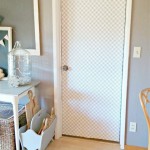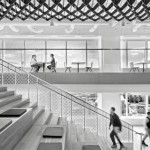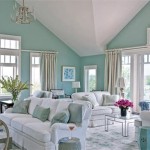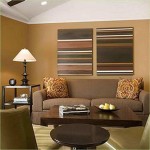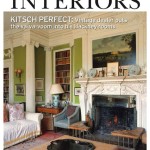Interior Design for Living Room TV Units: Functionality and Aesthetics
The living room serves as a central hub within a home, often functioning as a space for relaxation, entertainment, and social interaction. The television, both as a device and as a focal point, frequently occupies a prominent position within this space. Therefore, the design and integration of a TV unit is crucial in achieving a harmonious balance between functionality and aesthetics. Strategic consideration must be given to dimensions, materials, storage, and overall style to create a TV unit that seamlessly complements the existing interior design while effectively serving its intended purpose.
Choosing the right TV unit involves a detailed evaluation of the room's dimensions. Accurate measurements are indispensable for determining the optimal size and configuration of the unit. A unit that is too large can overwhelm the space, creating a sense of claustrophobia, while a unit that is too small may appear insignificant and fail to provide adequate storage or visual presence. The height of the TV unit should align with comfortable viewing angles from typical seating positions. The depth of the unit needs to accommodate the depth of the television itself, as well as any associated electronics such as media players, gaming consoles, or sound systems. In addition to the immediate area around the television, consider the overall flow of the room. A well-placed unit should not obstruct pathways or disrupt the natural movement through the space.
Material selection plays a significant role in the overall aesthetic impact and durability of the TV unit. Wood, particularly solid wood or high-quality wood veneers, offers a timeless and versatile option, providing warmth and character. Different types of wood and finishes can be chosen to match the existing furniture and décor. Metal, such as steel or aluminum, lends a modern and industrial feel, offering clean lines and a sleek appearance. Glass, often incorporated as shelving or door panels, adds a touch of sophistication and allows for displaying decorative items while minimizing visual clutter. The combination of different materials, such as wood and metal, can create visually interesting and textured designs. Selecting materials resistant to scratches, dents, and moisture is critical for ensuring the longevity and ease of maintenance of the TV unit. The finish of the chosen material, whether matte, gloss, or textured, will further influence the overall aesthetic and should be carefully considered in relation to the room's existing design elements.
Optimizing Storage Solutions
A well-designed TV unit goes beyond simply housing the television; it provides ample storage for various media accessories, electronic devices, and decorative items. Closed storage, such as cabinets and drawers, is ideal for concealing clutter and maintaining a streamlined appearance within the living room. These storage solutions can effectively conceal media players, gaming consoles, remote controls, and other items that might otherwise contribute to a cluttered environment. Open shelving provides an opportunity for displaying decorative items such as books, plants, artwork, or personal collections. This allows for personalization and the integration of individual style into the design of the TV unit. The combination of both closed and open storage solutions provides a balance between concealing clutter and showcasing decorative elements. Integrated cable management systems are essential for concealing cords and wires, further contributing to a clean and organized appearance. These systems may include grommets, channels, or hidden compartments that route cables neatly behind the TV unit, preventing unsightly tangles and ensuring a visually appealing space. The internal configuration of storage spaces, such as adjustable shelving or dedicated compartments for specific devices, enhances the functionality of the TV unit and allows for customized organization.
The integration of smart home technology demands careful consideration in the design of the TV unit. Incorporating features such as built-in charging stations for devices, discreetly placed speakers, and dedicated compartments for smart home hubs can enhance the functionality of the space. Ventilation is also crucial for electronic components, preventing overheating and ensuring optimal performance. Open-backed cabinets or ventilation grilles can be incorporated into the design to promote airflow and dissipate heat. Power outlets and wiring should be strategically placed within the TV unit to minimize visible cords and facilitate easy access to electrical connections. The location of the TV unit in relation to existing electrical outlets should be considered during the planning phase to avoid the need for extension cords or unsightly power strips.
Lighting plays a crucial role in enhancing the visual appeal of the TV unit and creating a comfortable viewing environment. Ambient lighting, such as recessed lighting or wall sconces, can provide a soft and diffused glow, reducing glare and creating a relaxing atmosphere. Task lighting, such as adjustable spotlights or reading lamps, can be incorporated to provide focused illumination for reading or other activities. Accent lighting, such as LED strip lights or spotlights, can be used to highlight specific features of the TV unit or to create a dramatic effect. Backlighting the television can reduce eye strain and improve the perceived contrast of the screen. This can be achieved by installing LED strip lights behind the TV or by using a dedicated bias lighting system. Dimming controls allow for adjusting the intensity of the lighting to create the desired mood and ambiance. The color temperature of the lighting should be carefully considered to complement the overall color scheme of the room. Warmer color temperatures create a cozy and inviting atmosphere, while cooler color temperatures provide a brighter and more energizing feel.
Harmonizing Style with Existing Décor
The style of the TV unit should seamlessly integrate with the existing décor of the living room. A contemporary style TV unit features clean lines, minimalist design, and often incorporates materials such as glass, metal, and sleek wood finishes. The focus is on simplicity and functionality, creating a modern and uncluttered aesthetic. A traditional style TV unit incorporates classic design elements, such as intricate details, ornate moldings, and rich wood finishes. These units often feature a more substantial and formal appearance, complementing traditional furniture and décor. A rustic style TV unit emphasizes natural materials, such as reclaimed wood, stone, and metal accents. The design reflects a sense of warmth, character, and connection to nature. A minimalist style TV unit prioritizes simplicity and functionality, eliminating unnecessary ornamentation and focusing on essential elements. Neutral colors, clean lines, and a clutter-free aesthetic are hallmarks of this design style. An eclectic style TV unit blends different design elements and styles, creating a unique and personalized look. This approach allows for incorporating diverse materials, colors, and textures, reflecting individual tastes and preferences.
Color plays a significant role in the visual impact of the TV unit and its integration with the existing décor. Neutral colors, such as white, gray, and beige, provide a versatile backdrop that complements a wide range of color schemes and furniture styles. These colors create a sense of spaciousness and allow for incorporating pops of color through accessories and artwork. Bold colors, such as deep blues, greens, or reds, can create a dramatic focal point and add personality to the living room. These colors should be used sparingly and balanced with neutral tones to avoid overwhelming the space. Complementary colors, such as blue and orange or yellow and purple, can create a visually harmonious and balanced effect. These color combinations create a sense of energy and visual interest. Monochromatic color schemes, using different shades of a single color, can create a sophisticated and calming atmosphere. This approach provides a cohesive and unified look, emphasizing texture and form. Contrasting colors, such as black and white, can create a bold and modern statement. This combination provides a striking visual impact and emphasizes the clean lines and minimalist design of the TV unit.
Accessories and decorative elements can enhance the aesthetic appeal of the TV unit and personalize the living room. Artwork, such as paintings, prints, or sculptures, can add visual interest and personality to the space. The size, style, and color of the artwork should complement the overall design of the room. Plants, both real and artificial, can add a touch of nature and freshness to the living room. Greenery can soften the lines of the TV unit and create a more inviting atmosphere. Books, arranged in an aesthetically pleasing manner, can add a sense of intellectual curiosity and personality to the space. The covers, spines, and arrangements of the books can contribute to the overall visual appeal. Textiles, such as throws, pillows, and rugs, can add texture, warmth, and color to the living room. These elements can be used to tie together different design elements and create a cohesive and inviting space. Decorative objects, such as vases, candles, and figurines, can add personal touches and reflect individual tastes and preferences. These items should be carefully chosen and arranged to complement the overall design of the TV unit and the living room.
Ensuring Ergonomics and Viewing Comfort
The ergonomic placement of the television and the TV unit is critical for ensuring comfortable viewing and minimizing strain. The height of the television should be positioned so that the viewer's eyes are level with the center of the screen when seated in the primary viewing location. This minimizes neck strain and promotes a comfortable viewing experience. The viewing distance should be appropriate for the size of the television screen. A distance that is too close can cause eye strain, while a distance that is too far can make it difficult to see details on the screen. The viewing angle should be within a comfortable range, typically within 30 degrees of the center of the screen. This ensures that the viewer can see the entire screen without having to strain their neck or eyes. The seating arrangement should be conducive to comfortable viewing, with sofas, chairs, and other seating positioned at an appropriate distance and angle from the television. The lighting in the room should be controlled to minimize glare and reflections on the television screen. Curtains, blinds, or dimming controls can be used to adjust the amount of light entering the room. The sound system should be properly calibrated to ensure clear and balanced audio. The speakers should be positioned at an appropriate distance and angle from the viewer, and the volume should be adjusted to a comfortable level.
Accessibility considerations are paramount, particularly for individuals with mobility limitations. Clear pathways and unobstructed access to the TV unit are essential. The design should account for the needs of individuals using wheelchairs or other mobility aids. The height of storage compartments and shelves should be accessible from a seated position. This ensures that individuals with mobility limitations can easily access items stored in the TV unit. Easy-to-use hardware, such as pull-out shelves or soft-close hinges, can enhance accessibility and convenience. These features can make it easier to access and retrieve items stored in the TV unit. Remote controls and other electronic devices should be easy to operate and understand. Large buttons, clear labeling, and simple interfaces can enhance usability for individuals with visual or cognitive impairments. Voice control technology can provide hands-free operation of the television and other devices. This can be particularly helpful for individuals with mobility limitations or those who have difficulty using traditional remote controls.
The long-term maintenance and durability of the TV unit should be considered during the design and material selection process. Durable materials, such as solid wood or high-quality laminates, should be chosen to ensure that the TV unit can withstand regular use and resist wear and tear. Easy-to-clean surfaces, such as smooth wood finishes or glass panels, can simplify maintenance and prevent the buildup of dust and grime. Protective coatings, such as scratch-resistant finishes or water-resistant sealants, can protect the TV unit from damage and prolong its lifespan. Regular cleaning and maintenance, such as dusting, wiping, and polishing, can help to keep the TV unit looking its best and prevent the buildup of dirt and grime. Proper ventilation is crucial for preventing overheating of electronic components and ensuring their longevity. Open-backed cabinets or ventilation grilles can be incorporated into the design to promote airflow and dissipate heat. Periodic inspection of electrical connections and wiring can help to identify and address potential safety hazards. Loose wires, frayed cables, or damaged outlets should be repaired or replaced immediately.

Simple And Cozy Living Room Decor

10 Best Tv Unit Designs That Will Elevate Your Home Interiors

Modern Living Room Emad Elmallwany

100 Modern Living Room Tv Unit Design 2024 Cabinet Ideas Home Interior Wall Decorating P10

400 Stylish Modern Tv Wall Unit Designs 2025 Living Room Cabinet Home Interior Design Ideas

L Shaped Tv Unit Design Beautiful Homes

Tv Unit Designs Interior Design Kams Designer

10 Best Tv Wall Design Ideas For Your Home Guide 2025

Modern Living Room Tv Cabinet Design 2024 Wall Unit Home Interior Decorating Ideas

200 Modern Living Room Tv Cabinet Design Ideas 2024 Unit Home Interior Wall Decorating
Related Posts

